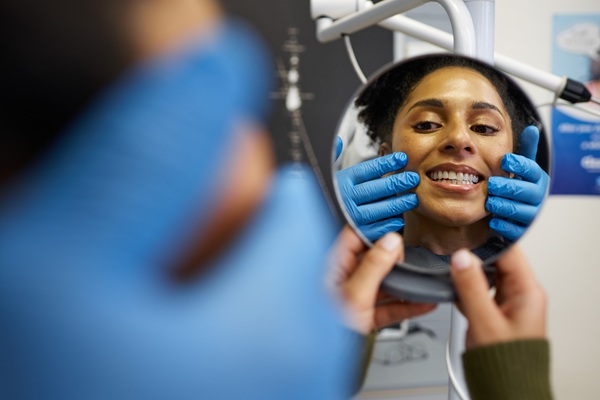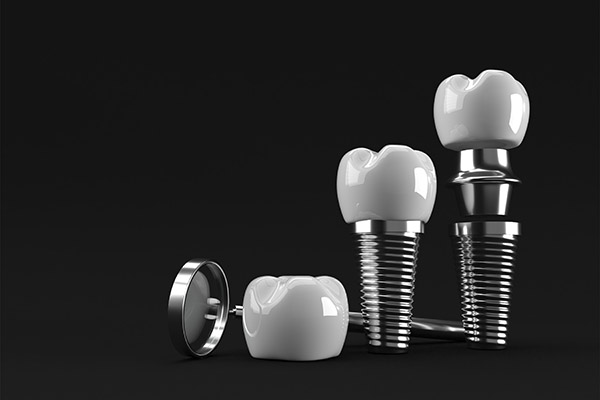What Happens During a Teeth Straightening Treatment?

Teeth straightening is a popular tool for patients who want to improve the look of the smile and increase the ability to keep teeth healthy and clean. Although many patients seek straighter teeth for cosmetic purposes, there are many advantages to correcting crooked teeth or misaligned bites. A general dentist can walk a patient through the process, make suggestions and provide a referral to an orthodontist if necessary.
The ins and outs of teeth straightening
The process of straightening the teeth depends on the method the dentist uses, although the mechanics are similar. When choosing between products and techniques, there are several factors to take into consideration, such as the condition of the teeth, problems that need to be addressed, budget, desires of the patient and likelihood of compliance.
What are some teeth straightening options?
Teeth can be straightened using one of several techniques. Traditional braces are made of metal or ceramic and consist of brackets temporarily attached to the teeth using special dental cement. A wire, called an archwire, is fed through brackets and usually attached using small elastic bands. The wire causes light, continuous pressure against the teeth, which causes them to shift into a new position. Some braces still use brackets but are self-adjusting, using a sliding mechanism in place of the elastic bands to attach the archwire to the brackets. Another option is called invisible braces or a tray system that uses a series of custom-made clear aligners worn continuously to move the teeth into a new position.
How does teeth straightening work?
Changes to the bite and alignment of the teeth can be made without harming the teeth if slight, continuous pressure is applied. As the teeth shift, they settle into the new position until a new adjustment is made. The adjustment can be a new tray for a tray system or with a tightening of the braces for traditional systems. Traditional braces also use other devices in conjunction, such as spacers, springs and rubber bands. When the teeth are in the final position, a retainer or final tray is used to maintain the new position.
What are the benefits of teeth straightening?
Although many people decide to get teeth straightening for cosmetic purposes, there are benefits that go beyond the appearance. Misaligned teeth can sometimes cause pain and are often more difficult to reach for a thorough cleaning. Some patients with misaligned teeth have difficulty with properly chewing food or get chronic jaw pain, neck pain or headaches that can potentially be resolved with orthodontia. Straight teeth can also improve confidence and boost the patient's self-esteem, which provides advantages to mental health.
Conclusion
Anyone considering teeth straightening can ask a general dentist about the process, options and benefits to help make an informed decision. A general dentist can also make a referral to an orthodontist for the patient. Both traditional braces and modern tray systems are good options for patients who want to improve the look of the smile or correct misaligned teeth for health purposes.
Request an appointment here: https://www.carmelsmilesdentist.com or call Smiles in the Village Dentistry at (317) 218-7985 for an appointment in our Carmel office.
Check out what others are saying about our services on Yelp: Read our Yelp reviews.
Related Posts
Professional dental cleaning are integral for keeping your mouth healthy. They remove plaque and tartar (hardened plaque) that regular brushing and flossing cannot, leaving your teeth and gums refreshed. Maintaining healthy habits that keep your smile bright and strong is essential to make the most of a dental cleaning. Caring for your teeth properly after…
If you are considering implant dentistry or are about to go through the process and want to learn more about it, it is helpful to first understand the basics. Here, we will discuss the various parts that make up an implant dentistry restoration and highlight how they all work together to complete the restoration.An implant…
If you have opted for implant dentistry to replace your missing teeth, you will need to decide on fixed or removable restorations. Read on to learn about implant dentistry and your options. Removable implant-supported restorations can be snapped on and off the abutments anytime there is a need to take off. In contrast, fixed restorations…
Dentures have long provided an effective solution for patients with missing teeth, offering improved oral function and facial appearance. Today, advances in digital dentistry are transforming the way dentures are designed, fabricated, and fitted—offering greater precision, comfort, and natural aesthetics. This innovative approach represents a new era in restorative care, helping patients enjoy a confident…


